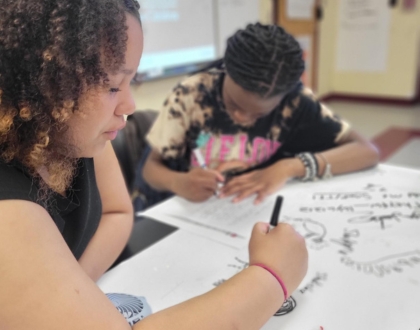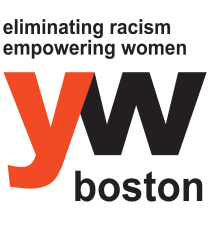
August 29, 2024
By: Aaron Halls
Empowering tomorrow’s change-makers: How F.Y.R.E. helps youth develop their power
One of the ways YW Boston lives into its mission of eliminating racism and empowering women is through our F.Y.R.E. initiative, an in-school and after school program that empowers middle-school girls* to challenge inequities and plant seeds of change in their communities.
Throughout the program, participants develop various skills and tools for self-empowerment and advocacy, culminating in a Community Action Project. We recently chatted with Jay Boss (they/them), YW Boston’s F.Y.R.E Initiative Senior Program Manager, who told us about a recent Community Action Project at TechBoston Academy, as well as how they hope the project inspires F.Y.R.E. participants to see their power.
Can you tell us about the Community Action Project and how it connects to F.Y.R.E.’s goals and objectives?
The Community Action Project is about allowing the [F.Y.R.E.] participants to have the opportunity to have a voice and be change agents within their community. The program itself really wants to encourage girls and gender expansive youth to lean into their own power, agency, and autonomy. It’s easy for middle school girls to feel like they don’t have any power because of their age. Most of the time they’re being told what to do and how to do it by adults, so they don’t feel like they have a say or autonomy over making their own decisions.
The Community Action Project is something that we really want to be student-led. With the Community Action Project, some of the lessons that we have are Conducting a Community Assessment, which gives students an opportunity to use their voice to identify issues within their school community that impact them at the intersection of race and gender. Another important lesson involves selecting one of the identified issues from the community assessment, which gives them the opportunity for group collaboration and decision-making authority to identify an issue that they feel passionate about to advocate for a change for themselves and others who might be impacted by these issues.
Can you talk more about how F.Y.R.E. students prepare for their Community Action Project?
The way the [Community Action Project] lesson works is that in identifying the issue and assessing their school community, they make a list of all the issues that they feel impact them. Once they’ve created this list, we’ve had some discussion about, “Why this is an issue? What are some of the changes they want to see?” Then, to encourage them to use their own voice to have decision-making authority around their Community Action Project they get a chance to vote. During the first round of voting, we select the top three voted on issue areas.
In the following sessions, we will do research so they can understand a little bit more about specific issues — it could be around gender discrimination or anything else that they’ve identified. Once they’ve learned a little bit more about the top three issues that they voted for we’ll do another vote, and that other vote will then give them the opportunity to choose one [issue to address for their Community Action Project.]
What did F.Y.R.E. participants do for their Community Action Project during the 2023-2024 school year?
With the sixth graders at Tech Boston Academy, they specifically focused on bathroom beautification. They identified some of the [areas] that they wanted to clean up [and improve]. [Some of these areas included ensuring upkept bathroom sanitary conditions, having clear mirrors so they could see their reflections, and improving bathroom accessibility during class time.] Having clear bathroom mirrors seemed particularly important to them because they felt like being able to see and make sure that they looked good throughout the day would help build their confidence and boost their self-esteem.
One of the concepts we review in our curriculum is about understanding power. So, the question was, “Who are the people in charge? Who are the people that have power? Who can you speak directly to that can hear you as you advocate for better bathroom facilities?” “Who are the people on campus who have decision making power to change the policies around the using and cleaning bathroom facilities?”
With addressing and identifying school admin and specific staff, the folks that are in power that we can get our message to, the students then decided that they were going to write a letter to school administration and staff addressing these specific issues and some of the changes that they wanted to see happen. Once they wrote their letter, they signed it, and we sent it over to some of our contacts and school admin, so that they could see that the girls were advocating for change.
How do you hope the Community Action Project will inspire the F.Y.R.E. participants going forward?
One key takeaway I want them to gain from this project is the realization of their own power. I want them to recognize that they can identify issues—those that negatively impact them and others—and take action. It’s not just about the individual students in the program; it’s about understanding that they can advocate for change and that their efforts, even as a small collective or cohort, can have a significant impact on hundreds of people over time. I want them to truly believe that they have the power and the voice, and that they don’t need someone else to step in and speak for them.
My role as the facilitator isn’t to be their voice, it’s to amplify their voice. To let them know that “You have the voice, and I’m just guiding you on how to use it. You use your voice. You use your power. You have agency to be able to ask for the change that you feel will make the experience for you, for other girls, for other girls of color, better.”
Are there any aspects of the F.Y.R.E. program that you want to highlight as we go into the 2024-2025 school year?
I’ve been in this role for two years now, and in that time, I’ve seen what truly ignites our participants’ passion. One thing that consistently fuels their fire is taking action—doing the work. However, before we dive into the action, we spend a lot of time on foundational concepts because our program aims to help them understand how the intersections of race and gender impact their marginalized identities.
These concepts—identity, racism, sexism, gender, power—can feel overwhelming and abstract at times, and students may initially struggle to connect them to their own experiences. As we head into the 2024-2025 school year, one of my main goals is to make these concepts more tangible from the start. Traditionally, we’ve conducted our community assessment, selected issues, and discussed the Community Action Project towards the end of the program.
This year, I want to shift that focus to the beginning because that’s where their excitement lies. By allowing them to identify the issue they want to tackle early in the curriculum, we can consistently tie the discussions of racism, sexism, and identity back to the concrete issue they are passionate about solving in their community action projects.
About YW Boston’s F.Y.R.E. program:
The F.Y.R.E Initiative is an empowerment and leadership program for middle school girls of color and gender-expansive youth in the Greater Boston area. It is a weekly in-school and after-school program that uses dialogue and experiential learning to focus on positive self-identity and social emotional skills, as well as social justice and civic engagement.
By the end of this program, participants of F.Y.R.E. (also called Igniters) will gain the skills and knowledge to identify and address needs within their community. Through the development of their sense of self, the understanding of their own agency and autonomy, and their increased capacity for advocacy, Igniters will create a community action project that addresses the disparities and inequities that directly impact them at the intersections of their race and gender.
*YW Boston Gender Inclusion Statement: We are committed to providing comprehensive and inclusive programming that uplifts the experience of all girls regardless of their assigned sex at birth. The F.Y.R.E. Initiative maintains gender equity by welcoming cisgender girls, transgender girls, and gender non-conforming individuals who experience oppression and discrimination based on their gender, gender identity, and gender expression.

